Sprinter Training: Best Leg Workouts To Get Faster
Dec 13, 2023
Sprinters need a lot of power and stability when it comes to the lower body. There are multiple muscle groups utilized in sprinting but getting them all to work together is critical to running fast. Many sprinters struggle in being able to find effective lower body exercises to build power, strength and stability so I made this article of the best lower body exercises for sprinters to get faster. Included will be some of my favorite lower body leg workouts to get the most out of your time spent at the gym.
Single Leg Rear Foot Elevated Split Squats
The single leg rear foot elevated squat is arguably one of the best lower body exercises for sprinters. It builds strength in your quadriceps, hamstrings, and glutes, which are vital for sprinting.
Additionally, the exercise helps improve balance and the ability to effectively shift your weight into your left and right leg. The exercise can be made more challenging by increasing the weight, lifting the heel during the squat or by changing up the tempo of the squat. For instance, holding the bottom of the squat for a 3 count and exploding up from there.
How To Do Rear Foot Elevated Squats
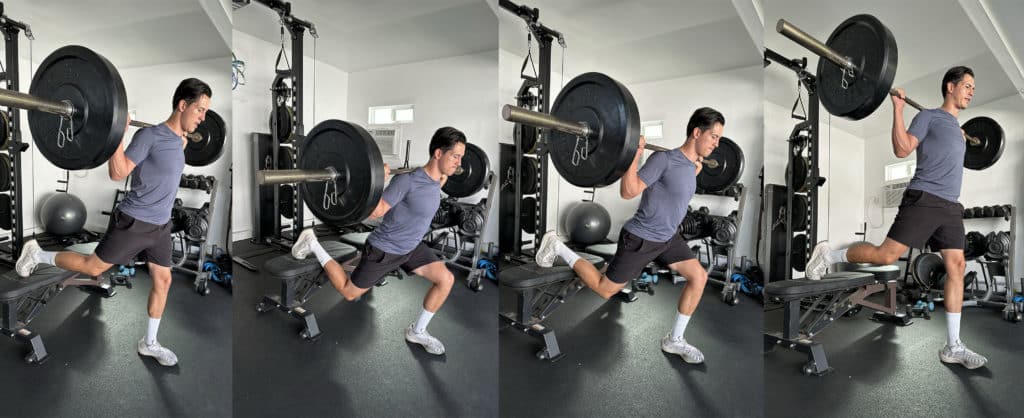
In order to get set up for the lower body exercise, start by getting a bench, chair or anything that you can put your leg onto. First, grab the dumbbell, kettlebell, barbell, etc then put one leg onto the bench. Make sure the front front or the foot you are squatting into is out in-front of your knee. When you squat down it is important the knee does not go passed the toe.
While squatting, slowly lower the body straight down so the back knee is going directly down towards the ground. Additionally, keep the chest up and chin tucked while lowering down. From there, drive the hips up and forward while extending the front leg in order to get the most effective work in your posterior chain.
Single-leg squats are a great exercise because it helps create balance between the lower body. It is very common for people to have compensation between their left and right leg which is why we recommend leg workouts that work each leg individually. This will help prevent injuries as well as lead to improved performance.
As you continue to get better and better with this exercise really be sure to keep a great connection with your feet. When you switch legs you will notice that each foot responds to the load in different ways. A lot of times how your weight is absorbed in your single leg squats, is very similar to the load you have in your start or when you get out of the blocks.
Utilizing this information to help improve your start phase or the first 3-5 steps of your race can lead to big improvements down the road.
Squat Variations

Back Squat
The barbell back squat is one of the most common exercises to improve lower body strength and power. The reason the squat is great for sprinters is it challenges both strength as well as range of motion in the ankles, knees, hips and spine.
When setting up for the back squat, start by positioning the body underneath the barbell, with the feet hip width apart. From there, keep the head and chest up and lift the bar off of the rack and set up for the exercise.
Now slowly lower down until the thighs are parallel to the floor or hips are the same height as the knees. Then drive down into the ground with your feet, push through the core and drive your hips up and forward. It is important to do this exercise correctly so you want to build the necessary range of motion before adding on a lot of weight. Now we will go into another variation of the squat.
Front Squat
The front squat is another great lower body exercise that utilizes a different load on the body. So the back squat uses a overhand grip with the barbell on the back. The front squat is a underhand grip with the barbell on the front of the body.
There are two different ways to hold the bar when doing a front squat, one is with the elbows high and hands apart and the other is with the hands crossed. Either of these are fine but this exercise puts a little more stress in the core, lower back and inner thighs. What is great about this exercise is it does not require the same amount of ankle and hip range of motion in order to sink deep into the squat position with those thighs parallel to the floor.
The set up for this is similar, after getting the barbell from the rack, start with the feet hip width apart and the chest upwards. Slowly lower down towards the ground with the weight moving slightly back into the feet. Keep the core engaged while going down and keep your spine as long as possible.
From there, drive your feet down, keep the core engaged and eyes forwards as you lift your hips forward and through. The power comes from improving the ability to explode out of the body so be sure to maintain a strong core and limited extra movements in the lower body.
Common issues that I see with the squats are the knees cavings inwards when initially coming out of the bottom. It is important to maintain stability in the hips and keeping the knees locked in to prevent over compensation in the inner things. Also, when lowering down it is important to keep the feet flat and prevent the heels from coming up.
Hex Bar Squat
The hex bar squat is a great squat variation because the weight is picked up off the ground instead of held on the shoulders. This makes it another one of the best leg exercises for sprinters to improve strength and power.
The set up for this is very similar to the other exercises where you want to start with the feet shoulder width apart and knees slightly bent. The difference in this exercise is the traditional squat is started in a standing position where this exercise you actually start in a squat position.
From the bottom of the squat, grab out the bar and pull the hips underneath the spine and pull the shoulder blades of the upper body together. From there, maintain the length in the spine and move the upper body upwards while driving the hips up and through. Be sure to engage the core muscles and keep the toes pointed forward and stand tall to complete the exercise.
Heavy Lunges

Lunges are probably one the most under utilized lower body exercises for sprinters to gain lower body strength, Especially when it comes to adding weight. I believe be able to lunge with 225lbs will carry over to sprinting more than squatting 405lbs will.
Doing a lunge is such a great leg workout because it teaches balance and stability in what ends up being very similar to the toe off action when sprinting. Whether doing a traditional lunge where you step forward into the lunge or doing a reverse lunge where you step backwards there are many benefits you will see from both.
Lunges with dumbbells or kettlebells
I recommend doing a wide variation of lunges in order to get the most amount of benefits from the exercise. Lunges while holding dumbbells or kettlebells are great to have the resistance shift forwards and backwards as the body is moving forward and backward.
There are a few common mistakes I see with the lunges and most of them have to do with the body as it is absorbing weight or stepping during the exercise. So first when you step forward you want to make sure the foot moves straight ahead and lands in line with the hip.
I commonly see people lunge and step with their feet slightly wider than their hip or step with the foot slightly more inside. Additionally, try to keep your feet facing straight ahead. Then when you absorb into the lunge you want the back heel to be facing straight up towards the ceiling and not turned inward or outward. There will be more in the barbell lunges.
Barbell Lunges

You can get a ton of lower body strength by adding in a variety of leg workouts with heavy barbell lunges. Similar to these other exercises I mentioned, how you do the lunges are just as important as the weight, reps, sets etc.
You can do barbell lunges both with the bar in a traditional back squat position or front squat with the hands in an overhand or underhand grip. The starting position when lifting the weight should be with the feet hip width apart and lift with the spine up and back away from the rack and get set up from there, make sure you have plenty of distance from the rack.
Now when you lunge be sure to be aware of step forward and preventing the feet from moving outside the hips. Always be aware of the back foot and making sure the heel is facing up towards the ceiling, also do not let the knee cave inwards as you are absorbing the weight.
Many athletes have bad lower body biomechanics because as they absorb weight the right and left knee will cave inwards. This is very bad when it comes to developing strength and speed. Have control in the lower body and keep the knees hip width apart while the knees bend and weight shifts into the front leg.
Reverse Lunges
Adding in reverse lunges came be a game changes for your lower body leg workouts and building the posterior chain. The starting position is important here where you want to start with the feet hip width apart and spine long.
When stepping backwards, keep the back heel high and slowly lower down into the front front. It is important when stepping back the right and left knee do not end up inside of the foot but instead the shin angle is straight and the weight is distributed evenly through the back leg. The more weight that is added the more difficult this will be to control.
Step Ups
One of the best lower body exercises for sprinters is the step up. This exercise is great because it emphasizes strength and power, which are crucial for sprinters. You can do this with a barbell, dumbbell, or kettlebell.
The forward and reverse lunge is an excellent lower-body exercise for toning and shaping your glutes and thighs. This move also improves hip flexibility and increases balance and stability.
How To Perform Step Up
To get into the starting position, stand tall on an elevated platform with the left leg toes pointed forward. Lift the right foot off the ground and step up so it comes to rest on top of the box or platform as you take a deep breath through your mouth (it’ll make more sense when you see it in action). Step back down and repeat as many times as possible before having to stop because you’re winded out!
If you step too far forward, the front knee absorbs all of the pressure. This can result in muscle strains, ligament strains, and tears.
Nordic Hamstring Curl
The Nordic hamstring curl is my favorite lower body exercise and is undoubtedly one of the best lower body exercises for anyone to do who is looking to improve their speed. This exercise is so good because not only does it strengthen the hamstring muscles but it also provides additional range of motion to them which prevents injuries.
How To Perform The Nordic Hamstring Curl

When doing the Nordic hamstring curl you want to start with feet and hips shoulder width apart and the toes tucked underneath. As you are lowering down you want to make sure to keep the toes on the floor and get the spine parallel to the floor. When lowering down you want your hips to come forward as well. Do not get stuck with the hips behind and the spine down.
From there, keep the spine as long as possible while lifting the upper body and driving the hips forward and through. Some people feel pressure in their right or left knee while doing this exercise which means they are pushing down too much with the knees rather than using their legs and hips to lift their body upwards.
Advantages of Nordic Hamstring
– Strengthens All The Hamstring Muscles
– Helps To Avoid Hamstring Tears and Pulls
– Promotes Hamstring Range Of Motion
– Improves The Leg Cycle When Sprinting

Good Mornings
Good mornings are a great lower body exercise that promotes lower back strength and helps lengthen the hamstring muscles. On top of that, it helps with being able to shift the weight forwards and backwards and teaches the body how to properly hinge.
I did not add in deadlifts to this list but instead chose good mornings because I had to take something out but also because I think if I had to choose one I do believe the good morning exercise has more carry over to sprinting.
The starting position for the good morning is weight the feet hip width apart and head up with shoulder blades down and back, stand tall. Start with the knees slightly bent and shift the weight back as you slowly lower your chest down towards the ground. The chest should be parallel to the floor when at the lowest point.
As much as you can, the exercise wants to be dominated by the movement happening in the hips. The hips should be more straight forward and back with the feet hip width apart and limited excessive action in the spine. Be sure to keep the feet flat and limit too much lifting in the toes as the weight shifts back.
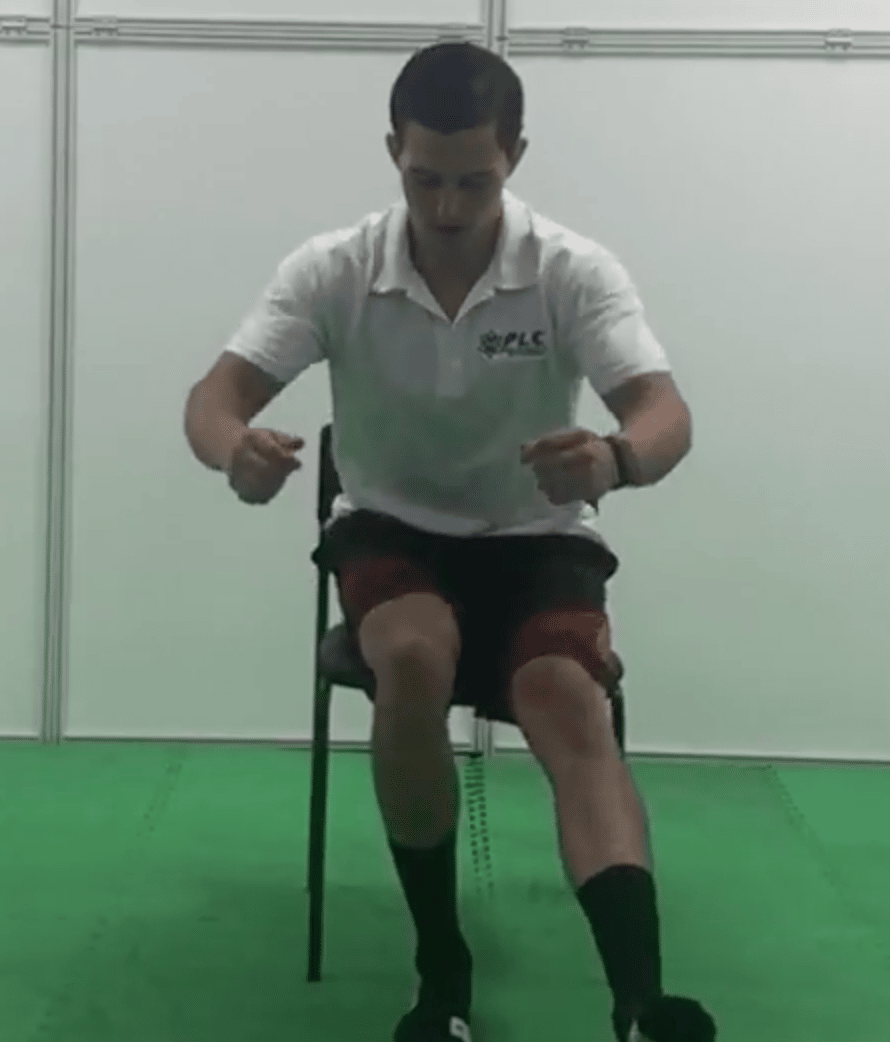
Single Leg Squat To Bench
Some studies indicate that increasing knee stability is one of the best ways to improve sprinting performance. The muscles that stabilize your knees and keep them from moving too much during running are your glutes, quads and ankles and these types of exercises are great to create synergy throughout the legs.
This is similar to the pistol squat and can be very effective in both improving performance as well as reducing injury and knee pain. Start out standing tall with a chair, box or really anything you can sit on behind you. Slowly lower down to the chair keeping your head up and maintain the leg facing straight ahead.
Common issues with this is the knees slightly bent inwards which can cause poor biomechanics down the road. It is important to learn great body control by doing exercises on the left and right leg. This is another great single leg exercise that is similar to the rear foot elevated split squat and pistol squat but gives some additional stability.
After you get better with this exercise you can progress it by lowering the seat, adding weight or by jumping out of the bottom instead of just standing tall.
Hip Flexor Strengthening
In order to run faster it is important to increase your hip flexor strength as well as range of motion. The hip flexor is probably the most important muscle of the lower body when it comes to sprinting because it connects the legs to the core and spine. Here is in my opinion, the best lower body exercises to improve strength and range of motion in the hip flexor muscle.
How To Perform The Hip Flexor Strengthening Exercise
The starting position for the hip flexor exercise is by standing tall and holding onto some type of stable structure such as a wall, rack, doorway etc. The most important part of this exercise is to keep the leg straight while it is lifted in the air. The body doesn’t want to change much from the starting position which means stand tall throughout and limit any extra movements.
It is okay if the leg that is on the ground have knees slightly bent. However, if the right leg is in the air, then the right knee wants to be as straight as possible by really driving the right foot away from the body while lifting up and down. Additionally, the left heel should be pushing down towards the ground in order to keep the left foot down to keep the feet flat.
When switching sides for this exercise it is important to alternate which leg is inside. So if your right leg was up the right hand should be holding onto the stable structure, utilizing the inside leg. When you switch legs make sure to also switch the direction you are facing so now your left hand is holding onto the stable structure.
Anterior Tibialis Strengthening
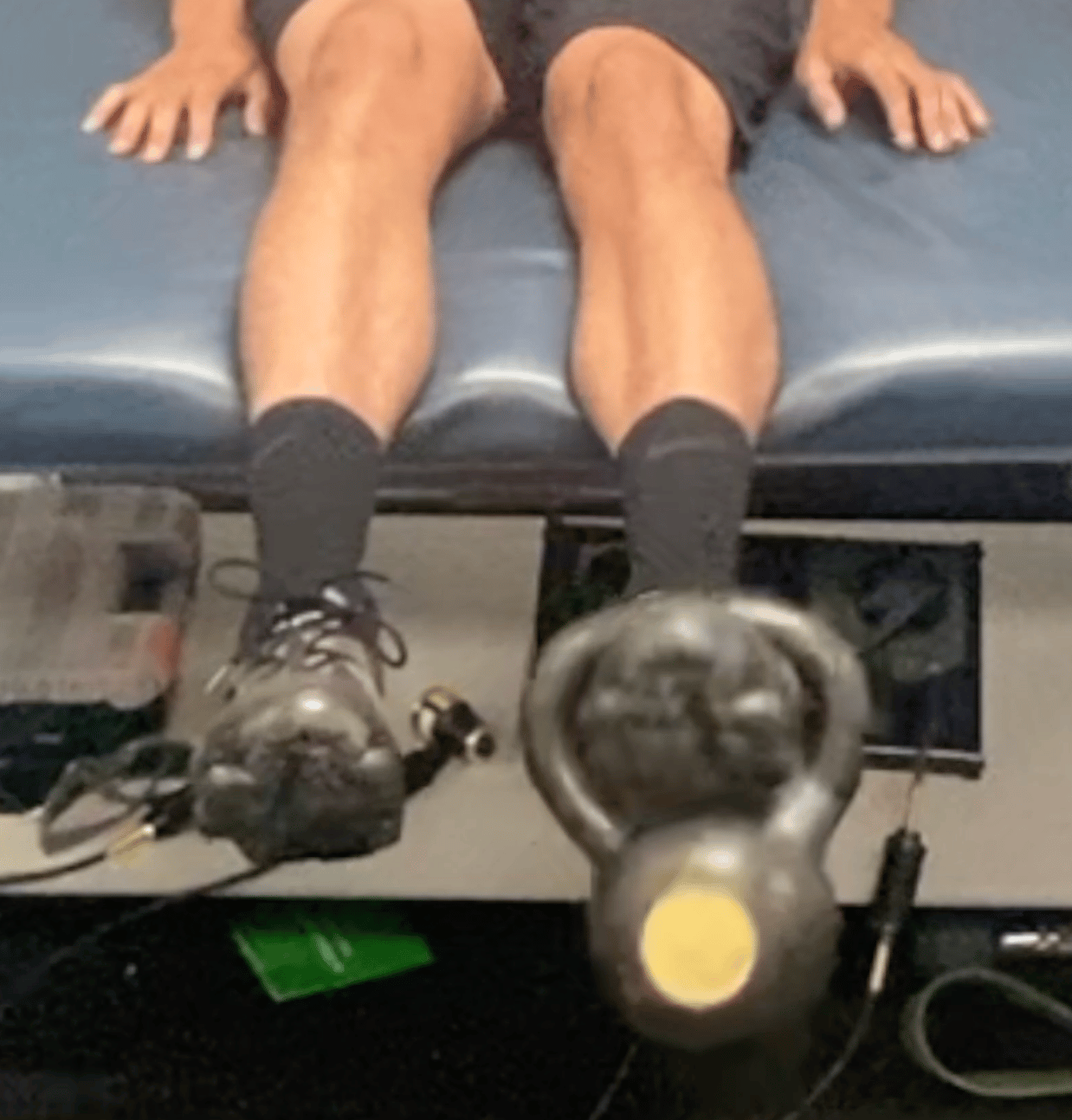
The anterior tibialis is a muscle that is critical to building foot strength and ankle dorsiflexion. I have found this kettlebell exercise to be one of the best lower body exercises to improve ankle strength and also prevent shin splints and other ankle sprains.
How to Do The Anterior Tibialis Exercise
When doing this start with the kettlebell on the left of right foot. Be sure the weight is on the middle part of the foot to prevent unnecessary pressure into the foot while doing the exercise. The leg wants to be on an elevated surface and the foot should slowly lower down keeping the right and left heel from moving much side to side.
I like to work going straight down as well as adding in circles where you circle the toes all the way around to right right and left side to increase flexibility in the ankle joint. It is important to keep the whole leg down when it is working so if using the right leg do not let right knee come up off of the surface.
Adductor Exercise
Adductor exercise is one of the most essential lower body exercises for sprinters because they help to improve strength in the inner thighs and prevent ground injuries. Many people point to the adductor magnus as being a potential fourth hamstring muscle because of its impact on the knee and hip.
How To Do Single Leg Adduction:
Start with one leg on an elevated surface such as a bench or chair. The foot wants to be even with the hip and down elbow. When doing the exercise the body does not want to move outside the plane of the starting position. Which means the hips want to lower straight down and come straight up.
If you feel a lot of pressure in the left or right knee it is probably because you are pushing down too much into the elevated surface with the foot. Instead, you want to be using your hips to lift up out of the bottom to feel the leg workout in the inner things.
Single Leg Calf Raise
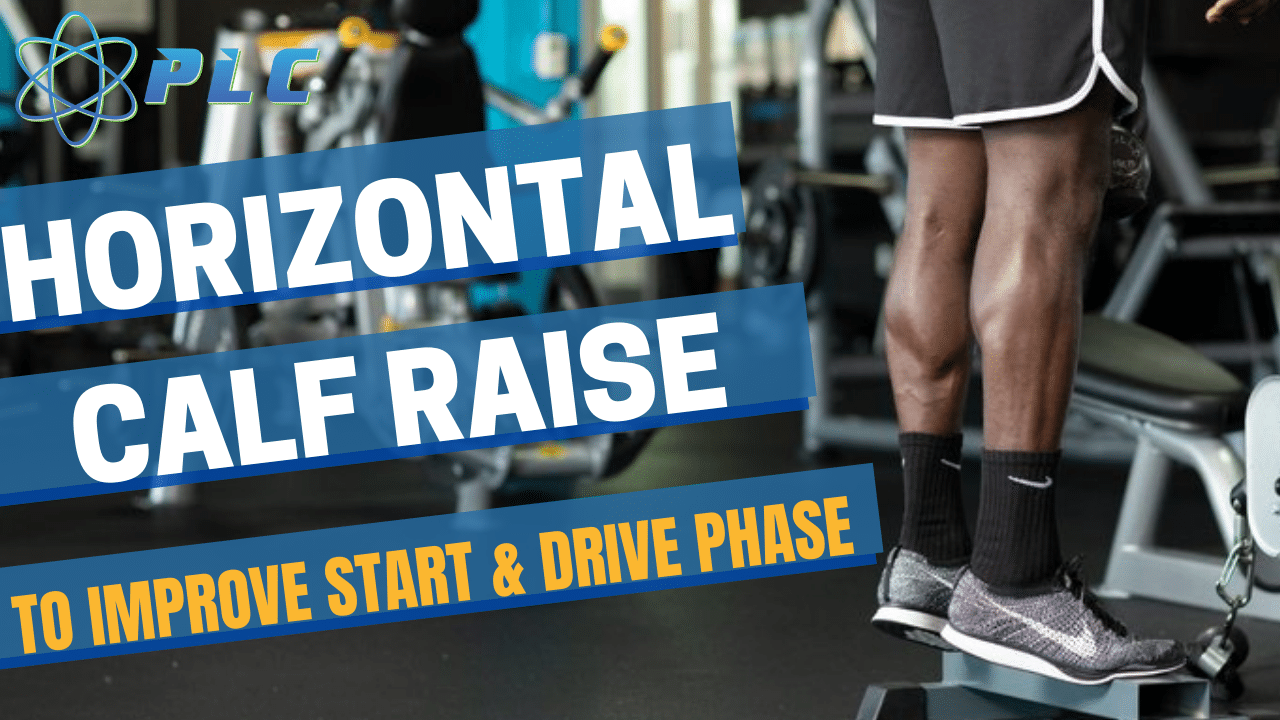
This is a great way to strengthen your calves. Calves are often overlooked but essential for sprinting as they help stabilize the ankles and prevent injury.
You can do single leg calf raise with weights or without, depending on what you enjoy more! To do a single leg calf raise with weights, hold a dumbbell in both your right and left hand and lift one foot off the ground while keeping your left foot flat on the floor. Then bring the lifted foot back down and repeat with your other left leg by lifting the left foot up.
To do a single leg calf raise without weight, start in an upright standing position on your left leg on an elevated surface like a step or box. Then slowly lower yourself down until your heel touches the surface below before lifting yourself back up as fast as possible! Ensure both to keep both feet flat on the ground when they are back on the ground that way your calf raise.
Jumping/Plyometric Exercises
Jumps are plyometric exercises that make use of the stretch-shortening cycle. Jumps require muscles to exert maximum force in short bursts of time in order to increase power.
11A. 2 Leg And Single Leg Broad Jumps

The broad jump is another of the best leg exercises which improves speed, power, and explosive strength. This leg workout has been proven to have a greater carry over to top speed than even the vertical jump.
When loading for a jump you want to start with your feet shoulder width apart and load with your arms moving backwards and keeping your chest up. Similarly to the squat, when jumping you want to drive your hips up and through by driving down with your feet and keeping your core engaged.
I often times add in continuous broad jumps with this so you can do single or do multiple like 5-10 broad jumps one right after the other. I think this is great in body control and generating lower body explosiveness. When doing multiple broad jumps it is important to maintain the feet shoulder width apart when landing. Also, the knees do not want to cave in too much when landing and there wants to be a rhythm of landing with the arms going back then jumping with the arms exploding forwards.
11B. Vertical Jump To Box
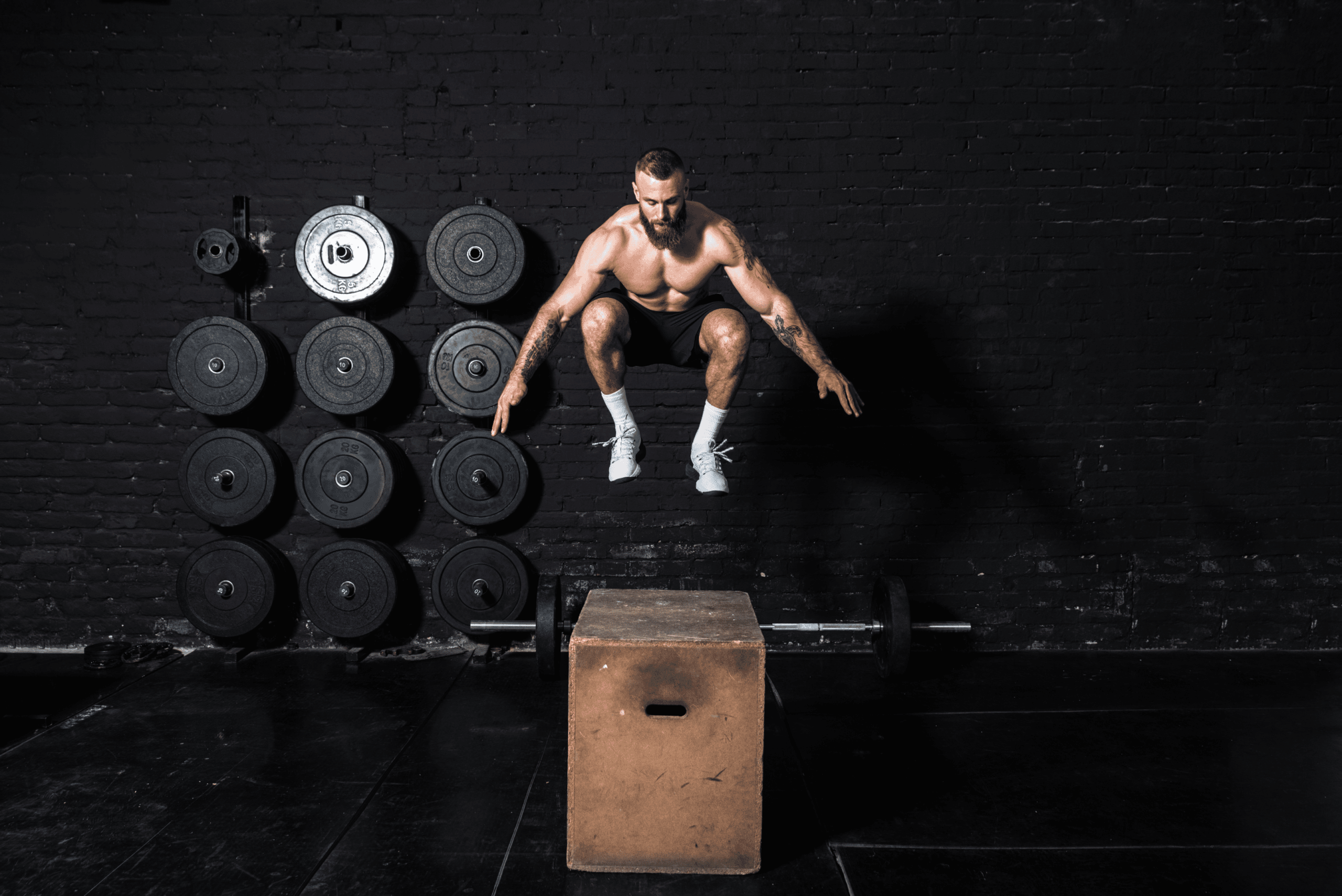
The idea of this lower body exercise is to maximize the amount of force you can apply to the ground, which will translate into more speed once you get into your run. When jumping and landing onto the box you want to keep the feet hip width apart and land on the box in a squat position.
Many people make the mistake of loading and getting their thighs parallel to the floor which makes the exercise look more like a squat than a jump. All jumps or plyometric exercises are intended to improve the stretch shortening cycle or ability to recruit the strength from you muscles quickly. In order to do this you must limit the load needed in the muscles to generate power.
Leg exercises like box jumps, landing, broad jumps, etc. improve power because they improve the ability for your muscles to recruit contractions quickly. Be sure when you jump you focus on being explosive and powerful and do not get stuck with having slow loading times.
11C. Tuck Jump
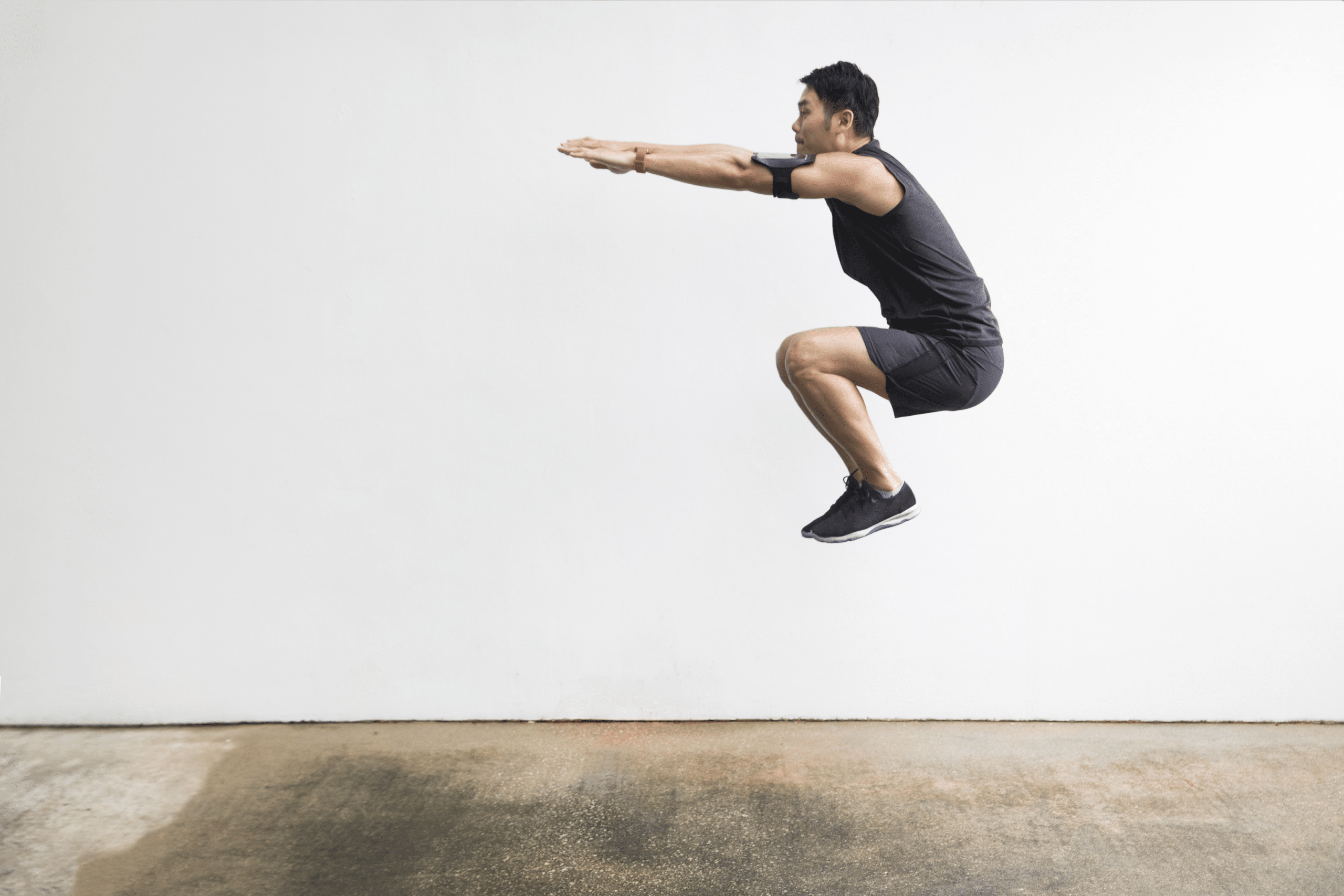
The tuck jump is another one of the best lower body exercises to improve foot contact time and force into the ground. When doing tuck jumps you want to be very aware of your starting position. The best of your ability you want to stay in the same spot as you are going through the jumps.
The amount of jumps can vary based off your skill level and the reason for doing the exercise. Each rep you want to knee the feet shoulder width apart and spend the least amount of time on the ground as possible between each jump. Just like the other exercises I mentioned it is important to keep the lower body facing straight ahead which means the toes face straight and the inner thighs do no turn inwards while jumping.
My favorite part of the tuck jumps and why I believe it is a great leg workout for sprinting is it helps with knee drive. Many athletes struggle with driving their knees through quickly but when you can do the tuck jump effectively it carries over into sprinting because it teaches the athlete to get their foot through quickly
11D. Single Leg Box Jump
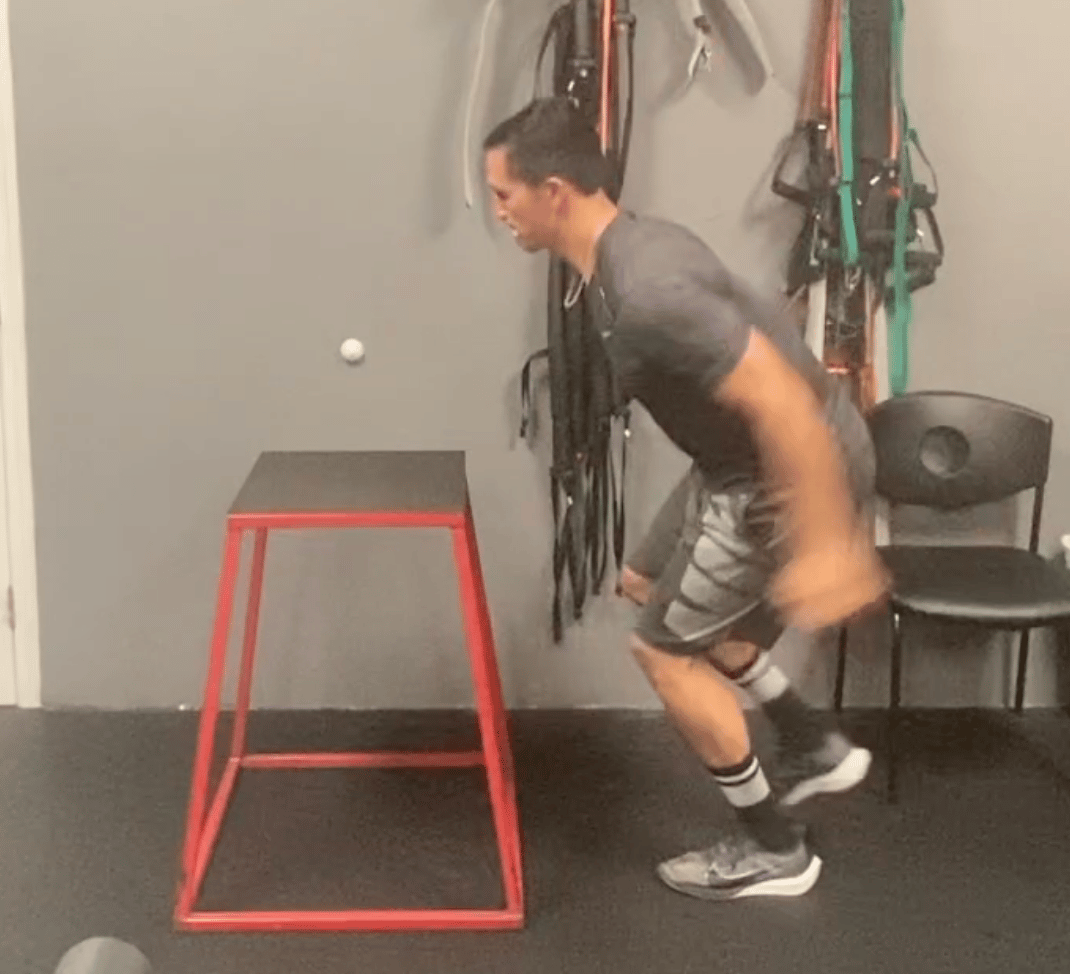
Another one of the best lower body exercises is a single leg vertical jump. Like I have mentioned before creating strength, power and balance is important to isolate on one leg. That is why so many of the exercises are done with two feet as well as one foot in order to properly build the leg muscles and posterior chain.
The important thing with the single leg jump is to drive the foot and knee up in order to get the right and left foot up and onto the box. You will end up landing in a pistol squat position but in order to complete the exercise you want to get all the way up into a standing position. Before jumping back down and switch sides.
11E. Single Leg Quick Tap Jumps
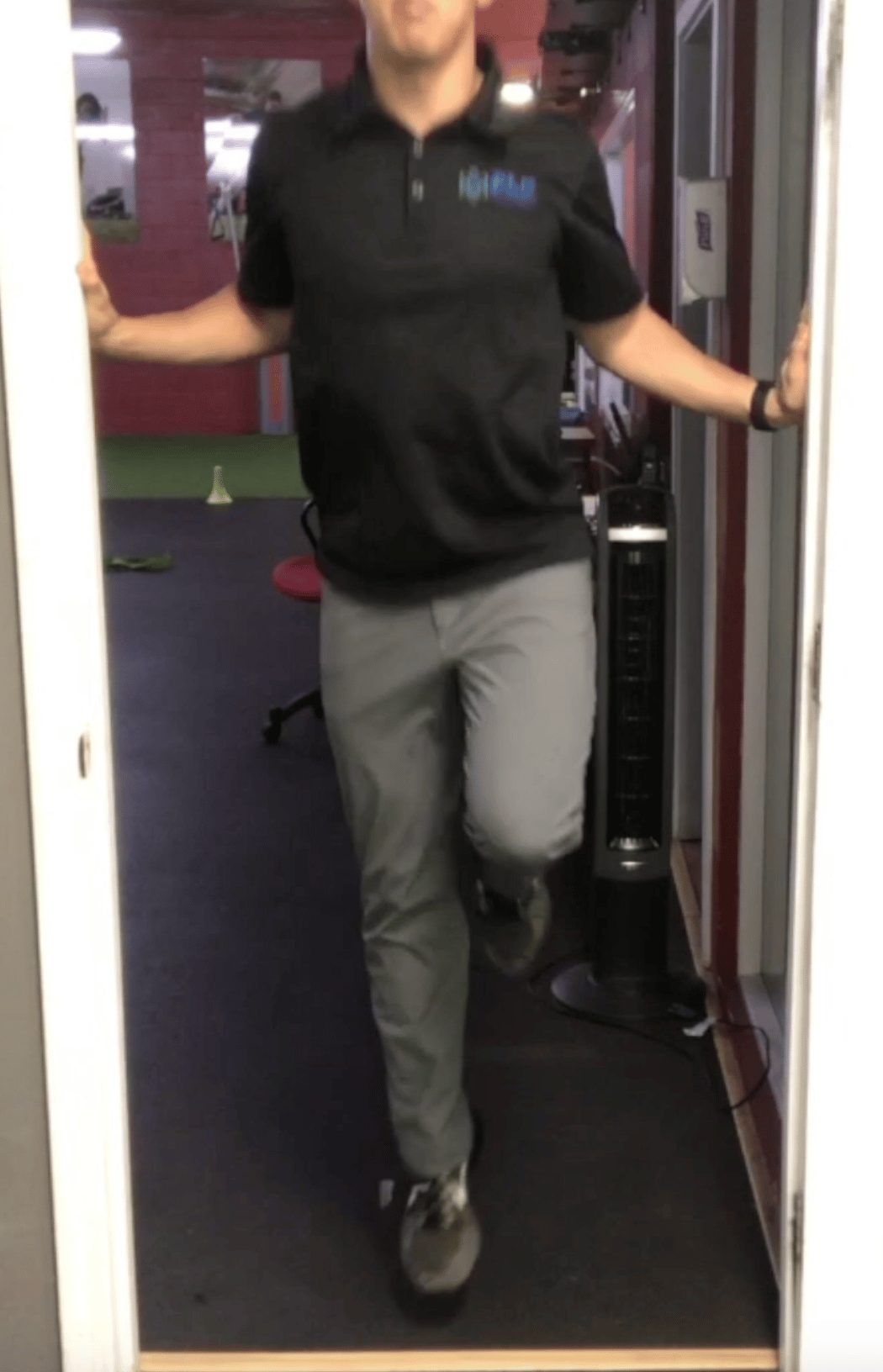
The quick tap jumps is one of the best lower body exercises to improve foot contact time and ankle strength. Many athletes struggle in separating their ankles from the rest of their bodies which means when lifting the left foot they also want to bend the left knee and vice versa. When doing this exercise be sure to keep the leg straight and only move in the feet.
It is important to stand tall and keep the head facing straight ahead while doing this exercise. The foot wants to stay right underneath the hips and the foot contact time wants to be very quick. You do not need to jump hip off the ground for this exercise to be effective, instead focus on isolating the feet and spending limited time on the ground.
Single Leg Landing From Box
The single leg landing from box is one of the best body exercises to practice body control and improve jumping power. Many times you are able to identify compensations happens in the left and right foot when doing single leg landing workouts.
Really these can be done with two feet as well as one foot and I recommend if you do not have much experience with jumping or are a young athlete than you start with two legs as this does put a lot of pressure on the lower body.
Landing is great to address compensations in the non dominant side. So if you primarily use your left hand it is pretty common that you are more comfortable balancing with the left leg. However, in order to run fast you need to be great with both your right and left leg so this workout will help with that.
The starting position is on a box and the important thing here is to just drop off of the box and not jump off the box. You do not need to have more pressure onto the right and left foot then just falling off. When landing you want to be able to control the foot, knee and ankle from going too far forwards or side to side. Looking to achieve a more explosive first step?
Conclusion
There are many different types of leg exercises and lower body workouts that you can do to develop your sprinting techniques. If you want to get better at sprinting, try these ten ground force building exercises!
Stay connected with news and updates!
Join our mailing list to receive the latest news and updates from our team.
Don't worry, your information will not be shared.
We hate SPAM. We will never sell your information, for any reason.

